The dreaded M word…Mold. Many areas that you inhabit daily can have mold. Millions of small spores clump together and can invade your home. The mold spores can grow quickly and get into your air, making it dangerous to breathe and live in. Fortunately though, you can use a home remedy for mold removal in most cases for getting rid of these spores.
Mold is dangerous to breathe in for anyone, but it is especially dangerous for individuals with weakened immunity and breathing problems. Mold can make it impossible to stay in your home or work place.
If you notice signs of mold, you need to act quickly and get it cleaned up before it has a chance to spread. Mold can be very hard to treat because of how quickly it does spread.
When you are cleaning mold, you will want to wear a mask to keep you from breathing in any of the spores, regardless of the home remedy for mold removal used. If you suffer from any respiratory illnesses, you may need to get some helpers as you definitely do not want the exposure. It is also a good idea to wear rubber gloves for extra protection.
Related: 15 Pieces of Crucial Urban Survival Gear
#1. Moisture Control
Mold thrives in moist conditions. If you have a leaky drain then you will most definitely have mold under your cabinet. Controlling moisture is vital in controlling the development and growth of mold. Fix the leak and replace any wet boards or use a fan or heater to dry them. Be sure that carpets are dry if they got wet. A leaky roof can cause your whole house to become invaded with mold spores. When this happens, you want to know how to kill mold spores since you have to act fast.
You can also use silica products to maintain an area that seems to always have moisture in the air. A dehumidifier is also an excellent tool to have, especially if you have a basement.
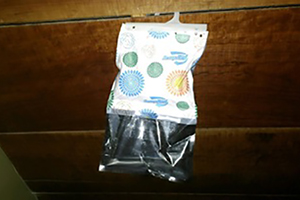
Be sure to clean up any spills and don’t leave wet clothes or rugs laying around, it is crazy how fast wet clothes will start to grow mold or mildew.
These packets are great for hanging around and absorbing any excess moisture. This particular packet is hanging in an area under the stairs in an add-on of the house.
Related: How do You Keep Your Pantry Dry to Prevent Your Food from Spoiling?
#2. White Vinegar
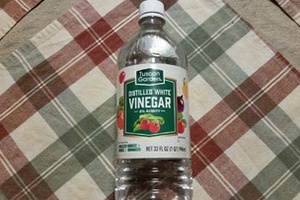 White vinegar is one of the oldest home remedies for mold removal known to man. It is important to be sure that you use distilled white vinegar only. Distilled vinegar is made by a fermentation process and contains less acetic acid then regular vinegar. The vinegar can kill up to 82% of mold spores. You can also spray your showers and sinks with the vinegar to keep any new mold spores from growing.
White vinegar is one of the oldest home remedies for mold removal known to man. It is important to be sure that you use distilled white vinegar only. Distilled vinegar is made by a fermentation process and contains less acetic acid then regular vinegar. The vinegar can kill up to 82% of mold spores. You can also spray your showers and sinks with the vinegar to keep any new mold spores from growing.
Simply put the vinegar in a spray bottle and spray the affected area. Allow the vinegar to sit as that is how it kills the spores. Do not scrub the area with the vinegar.
#3. Tea Tree Oil
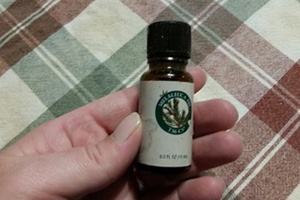 When thinking about what kills mold, this is one answer you most likely did not expect. Tea tree oil is safe to use on any type of surface. If you have never worked with tea tree, you will quickly learn it has a very strong smell to it. Therefore it may not be the best option if you have respiratory problems. Tea Tree oil is also expensive to purchase, however a little goes a long way.
When thinking about what kills mold, this is one answer you most likely did not expect. Tea tree oil is safe to use on any type of surface. If you have never worked with tea tree, you will quickly learn it has a very strong smell to it. Therefore it may not be the best option if you have respiratory problems. Tea Tree oil is also expensive to purchase, however a little goes a long way.
To use tea tree oil, you will need a spray bottle. Mix two cups of water with two teaspoons of tea tree oil. Shake the mixture well in the spray bottle and spray the entire surface that is plagued by mold. Allow the mixture to sit on the area. Do not scrub the area after you have sprayed it. The trick with tea tree oil is allowing it to sit and kill the spores.
#4. Baking Soda
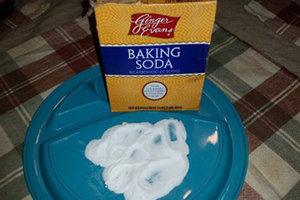 Baking soda is an all around awesome item. It helps with moisture, it eliminates smells, it can be used in cooking, and is a great cleaner. Baking soda is also an effective home remedy for mold removal you can use in a very simple way. Mix baking soda with water, vinegar, or use it by itself.
Baking soda is an all around awesome item. It helps with moisture, it eliminates smells, it can be used in cooking, and is a great cleaner. Baking soda is also an effective home remedy for mold removal you can use in a very simple way. Mix baking soda with water, vinegar, or use it by itself.
If you choose to use the baking soda by itself, then you just need to sprinkle it onto the area and let it sit. You can sprinkle it into your carpets, cabinets, and showers. Sweep up the areas after a while and then simply re-sprinkle as needed. Baking soda is a mild cleaner so it is safe for any surface.
To mix the baking soda with water or white vinegar, be sure that it is completely dissolved before use. Simply put the baking soda in a spray bottle and then add either water or vinegar. Stir or mix it around until it is dissolved in the liquid. Spray the mixture onto the mold and wait 15 minutes. Then use some good old fashioned elbow grease and a damp rag and scrub.
#5. Hydrogen Peroxide
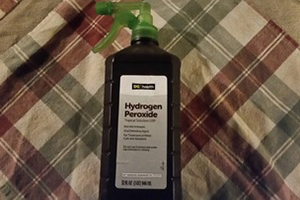 This bubbly cleaner is great for wounds and it even cleans your sink when you clean a wound over it. The bubbling action will also kill mold.
This bubbly cleaner is great for wounds and it even cleans your sink when you clean a wound over it. The bubbling action will also kill mold.
All you need is 3% hydrogen peroxide and a rag. Spray or even pour peroxide on the mold and watch it work. Wipe up the area after about ten minutes and watch the mold disappear.
Remember to leave the peroxide in a dark bottle, as light will weaken it over time.
#6. Grapefruit Seed Extract
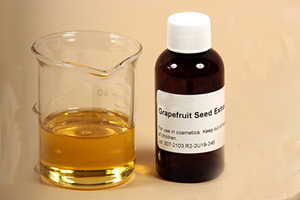 This is another “a little bit goes a long way” method. The grapefruit seed extract can be expensive but unlike tea tree oil, it is an odorless home remedy for mold removal. To use this you mix two cups of water with 20 drops of extract in a spray bottle. Once it is mixed, spray it onto the mold and leave it to sit. There is no need to scrub or wipe up the area after spraying.
This is another “a little bit goes a long way” method. The grapefruit seed extract can be expensive but unlike tea tree oil, it is an odorless home remedy for mold removal. To use this you mix two cups of water with 20 drops of extract in a spray bottle. Once it is mixed, spray it onto the mold and leave it to sit. There is no need to scrub or wipe up the area after spraying.
Now that you know what natural options are available to kill mold you, just need to figure out which method is best for you and your health. Some of these natural remedies do have an odor to them, unlike the silent mold. You may have to leave the house to allow time for the space to air out after use or just deal with it. It is best to clean in a well ventilated area. If some of these remedies are too strong, then you can try any of the other remedies. This is something to keep in mind, depending on your respiratory health.
You may also like:
 Should You Throw It Out? These Moldy Foods Are Still Edible
Should You Throw It Out? These Moldy Foods Are Still Edible
Do You Make These Fatal Mistakes In A Crisis? (Video)

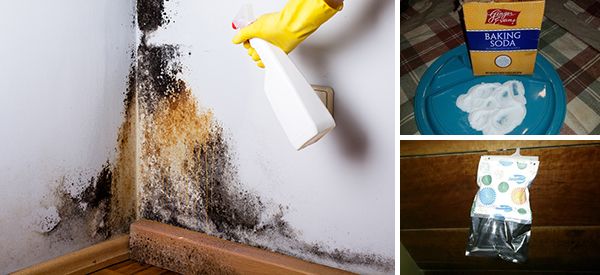













These are very helpful people should use them instead of the cleaners that are sold in stores. These are a lot better.
Have you ever mixed vinegar and baking soda?
It is the basis of science fair volcanos…..
Lol, I was going to post something similar.
yes, all the mixture bubbled out of the bottle before I could use it! lol
Not sure why bleach wasn’t on this list for serious mold issues. Cheap & extremely effective. Easy to apply with a garden sprayer and commonly used by the pros. Mix 50 /50 with water or even 100% on the nastiest cases. Maybe the list maker was afraid of liability. Use eye protection, respirator & gloves. open windows and set up fans for intake & exhuast
2 reasons: 1, bleach is a harsh chemical and 2, it doesn’t kill mold anyway.
A careful combination of white vinegar and peroxide will actually kill most mold. It’s also pretty toxic, so handle with care.
I had a great article linked to NutriBiotic, the only manufacturer of GSE, grapefruit seed extract, I have found, before the corporate controllers of our government came down with the massive crackdown on traditional healing, and scared people off from making any representation that natural products can have health benefits. I read that surgical wards used it to greater efficacy than other products in South America. The amount used there was 1 drop per gallon. I need to find that article before it falls victim to the modern version of book burning. GSE is expensive, but it goes a long way. I think I paid about $26 for a 4 oz bottle. I replaced it after about 5 years because I misplaced it. It is effective for bacterial stomach issues, and can help control candida issues.
Absolutely use one of these methods vs the more commonly used bleach method, bleach will kill the mold but it will also set off the mold spores into the air causing more problems. So never ever use bleach!!!
Never heard about bleach setting off mold spores, how does that work?
Mark where did you get that info? I’ve sprayed gallons of bleach in the nastiest of nasty mold infested homes where it was on all walls and ceilings of every room. My experience has been no reoccurrence or additional problems. I do wear gloves, eye protection, respirator and set up intake and exhaust fans. Get out and take a break between rooms so your eyes don’t start to burn. Wouldn’t spores that have been released into that environment be dead mold spores?
One can use Baking Soda and Vinegar to clean a sink and some say unclog it.
Mixing vinegar (that is an acid) with Baking Soda (a base more or less) that is Neutral or a Base is or WAS basic High school Chemistry. I seriously doubt the teach anymore.
There are many numerous combinations of things around the house and if one has a pool that can result in severe bodily harm or death of oneself or others ether accidentally or on purpose.
The reaction of mixing of Vinegar and Baking Soda most likely harm anyone and is reported to be a good cure for poison ivy. Is an instant reaction resulting in a lot of foaming.
BEFORE MIXING ANY CHEMICALS FIND OUT BEFORE HAND WHAT IT IS GONG TO OR SUPPOSE TO HAPPEN…….to give one an idea of hat to expect and hopefully one will not get hurt injured and there is no loss of fingers/limbs/permanent loss of sight/ or death(s) and only a big mess to clean up.
High School Chemistry built the device used in the attack in Oklahoma City on the Murray Building some years ago.
People so afraid of the so called DEADLY (NON) “ASSAULT” firearms simply because of the a they look.
Should be more concerned and fear some basement dwelling backyard chemist! No matter their political leanings.
There are far more deadly and far easier and less expensive items to get than firearms and NO ID is needed or required.
We saw what simple High School Chemistry did in OK City.
Vinegar and Baking Soda are another case of simple High School Chemistry.
Just saying Common Sense tells us in this day and age Common Sense is not very Common….We have A LOT of “Darwin Winners” out there to prove it!
Thank you very much for the info. on getting rid of mold. I have some in the bathtub area that is driving me crazy!! Tried a couple of “Mold Removers”. Didn’t work! Lost money!! So am ready to try natural!! Thank you again!!
The Federal Building in OKC was where ALL the Whitewater evidence against HRC was being held. It just happened to get destroyed in that bombing.
Simple High School chemistry DID NOT take down that building. The Clinton/Deep State machine did!
I can’t get to the post just delivered in my email. I am interested in Borax, sugar and water, for getting rid of ants. They drive me crazy.
I use a tablespoon of dish washing soap in a quart of plain white vinegar. It kills the ants, the soap removes whatever residue is attracting them and the vinegar also destroys the trail that the ants leave for the other ants to follow from the nest. If you watch one that you haven’t sprayed, it scurries around searching for the trial which has been removed.
left coast chuck,
This works well enough; but, leaves the nest intact, so any food morsel left out in the future could have the little bugs back on the move and having to do this over again. The borax sets up an irresistible poison buffet that kills the entire nest within a few days and completely removes the problem.
In an area with pets that could get into the mixture, this might do the trick; but, may have to be repeated on occasion.
In our case the ants will sometimes come out for morsels of cat food dropped by one of the cats.
Tom,
That happens all of the time, probably because of some site configuration issue that sends out the email comments before they are ready for display.
It’s a timing issue and perhaps Claude can fix it.
Here you go:
Borax & Sugar Ant Remedy
Mix
½ Cup Sugar
1 ½ Tbsp Borax
1 ½ Cup warm water
You can scale down the recipe for a smaller batch.
Place in a container out of the way of pets and spill a little over the edge of the container onto the floor or countertop to attract the ants.
You will soon see the container completely covered with ants, as they all com out to feed; but, within a day or so as they drag the mixture back to the nest, they will simply all disappear.
Depending on how many and the size of the ants we’ve used everything from a tuna can to a bottle cap for the container.
My wife did this just last week for some tiny “grease” ants using a bottle cap and they are now gone.
Depends on if your ants like sweet or fat. Some ants prefer the first, others crave the latter. So once youve figured out what your ants want, just mix a paste of borax with it, then leave it on an established ant trail. It may take a day or two for the ants to take enough of it back “home” for everyone to eat, but you WILL notice a great reduction in population.
I dunno, I just spray it with bleach and go on down the road. Black mold was a huge insurance scam in Texas, mold abatement companies bilked the insurance companies out of hundreds of millions of dollars until studies showed toxic black mold was extremely rare in Texas and the laws were changed.
It’s fun to mix chlorine and pool acid, too, I think that was the trick they used in the gas chamber to generate phosgene gas. Come on, Darwin winners.
IvyMike: I don’t know what gas chamber you are referring to, but the Nazis used Zyklon B in their gas chambers. In researching that trade name I was surprised to read that it was originally formulated in California in the 1880s. It was first used as a pesticide. Apparently it is no longer used as a pesticide, but is still manufactured as it has other industrial uses. It is a cyanide based poison. Currently the product is manufactured as Cyanosil. I don’t believe it is manufactured in the U.S. Chemically it is hydrogen cyanide. It works by interfering with your ability to breathe. The process is more complicated than that but it is highly efficient and quite deadly. In English, Zyklon is Cyclone.
I hate to say this, but I work for a german owned chemical company that use to make zyklon b and other nasty stuff for the Führer.
vyMike,
Actually that generates chlorine gas.
You can generate Phosgene gas by super heating carbon tetrachloride; but, neither is recommended.
The Germans started with exhaust fumes from trucks; but, ended up using Zyklon B, a cyanide-based pesticide.
Many modern nerve agents started out as pesticides.
Ohio: Hey, if it can kill roaches, it can wipe out anything.
I would wholeheartedly agree with you. Messing around with chlorine gas, cyanide gas, phosgene gas or even just plain old CO from your 55 Chevy dually will generally qualify you for the Darwin Award.
Speaking of exhaust from a 55 Chevy, I was walking downtown last week and a guy went by in what was either a late 50s or early 60s Lincoln. His exhaust wasn’t smoking, but the oil laden fumes coming out of his exhaust reminded me of what the air was like back in those days out here on the left coast. Gag, gag, choke choke.
Now that I think about it, the fumes probably weren’t coming from his exhaust but from his crankcase breather, the tube that vented the crankcase via a pipe to just below the oil pan to allow the buildup of fumes to escape the crankcase. Wow! That brings back old time memories. That was the first air pollution device. The crankcase breather tube took the crankcase fumes and went back to the valve cover to hopefully be burned the next time it went through the engine. Most folks disconnected them because they felt it lowered engine performance. That was still in the days when you opened the hood you could identify all the parts even if you didn’t know how to tear them down and repair them. Those were the repair days, not the throw it away and put in a new one days that we have now.
left coast chuck,
The borax & sugar mix works on both roaches & ants; but, we haven’t seen roaches here in decades, since once you get rid of them, keeping things cleaned up pretty much keeps them away. The ants OTOH will come out of the woodwork (quite literally) for an insignificant spill of something on the floor or countertop; but, that’s always been a part of rural living, surrounded by trees, fields, and anthills outside.
Unfortunately the preparedness movement and cost cutting by some has seen an uptick in CO related problems. Too many people use open combustion (propane or natural gas fired heaters or wood) with inadequate ventilation and no CO detectors. I’ll often hear on the local news about a person or family harmed or killed by CO in a home with no CO detector in sight.
It probably doesn’t help at all when you pack that many people into such a relatively small area with vehicles and other combustion devices for cooking & heating. We hear about poor air quality in some of our larger cities here; but, never out where we live. We do on occasion have an interesting aroma with livestock; but, we just chock that up to derrière (Dairy Air) from the herd of dairy cattle in the adjacent field. (There’s a joke in there somewhere. LOL)
My first new vehicle was a 1974 Toyota Landcruiser that did have a belt driven air pump for the same reason. I had a friend with a newer model LC (1980’sh) and when you looked under the hood it looked like a hose factory had exploded there.
I think that’s probably because it did and those same people might have put glass packed mufflers with a bit of oil added for the same reason.
I can understand most of the parts; but, they are not simple parts and are expensive to replace. OTOH, you can plug an inexpensive diagnostic tool into the CAN / LIN bus and get a rather good idea of what’s not working properly.
At my age I’m wealthy enough that what little work needs done on our vehicles we have someone else do, since laying on the ground in cold weather with the vehicle on ramps to get dirt and oil in your face is just not worth the $20-30 it costs for someone else to do the work. The oil and filter would still cost something if I still did the work myself,; but, I’ve gotten lazy in my old age and can afford to have someone else do the work. That way I’m also contributing to the local economy. LOL
One thing we keep around that has many uses including mold control is Sodium Borate, more commonly known as Borax. We use it in the laundry, nixed with water and sugar for ant control, and either dry or mixed with water for controlling mold.
There is a site dedicated to mold control that describes how to use it and other treatments: https://moldpedia.com/mold-removal#borax
Keeping areas dry and free of waste organic material is a good start.
Cedar shavings help to destroy mold spores too.
By the way, straight Tea Tree Oil will dissolve paint. We use it mixed 1 part with 10 parts Sweet Almond Oil for a long lasting hand sanitizer while this mixture is gentle enough to use on a baby!
Because of black mold in our home, we now hang up the shower curtain to dry faster, wipe out the shower and tub and keep furniture away from the outside walls. I ended up with it in my lungs, perhaps fungal pneumonia? Thankfully I had the nutrition resources to get my lungs “crystal clear” as my doctor put it, but I believe I would have been dead if I tried the hospital route…they even gave our daughter fungal septicemia with their treatments! she almost didn’t survive that! Wrongly prescribed treatment!
So we use a lot of Garlic and Acidophilus, plus Vitamins A, C and E to keep fungal problems at bay!
If you feed eggshells to your chickens make sure you break them up well. Otherwise you might be just teaching them to break their own eggs. My grandmother (born 1884) told me this when I raised chickens for 4H during the early 1950s.